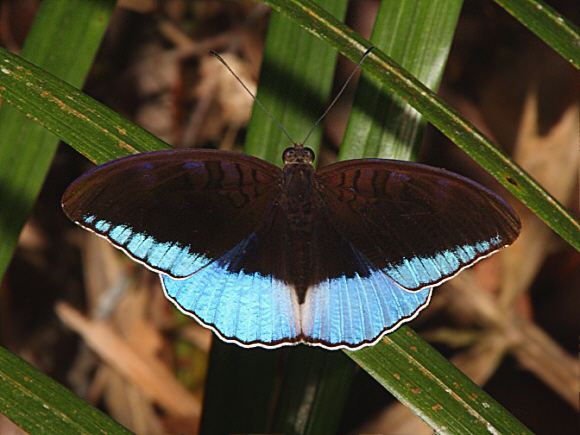
Introduction
The genus Tanaecia comprises of about 30 species, found variously in India, Burma, Thailand, West Malaysia, Sumatra, Borneo, south China, the Philippines, Java and Bali. Males of most species are dark chocolate brown with broad slightly metallic blue or green marginal bands. Females are much paler and lack the blue / green bands. Instead they are patterned with a series of white or greyish streaks, indented with dark chevrons.
Tanaecia iapis is one of the commoner species. It is found in West Malaysia, Sumatra, Palawan, Borneo and Java.
Habitats
This species inhabits rainforest at elevations between sea level and about 500m.
Lifecycle
The larval foodplants appear to be unrecorded, but larvae of the closely related species lepidea are known to feed on Careya ( Lethycidaceae ) and Melastoma ( Melastomataceae ).
Adult behaviour
Males can be found along forest roads and tracks where they bask on bare ground or on low foliage with their wings outspread. I have observed the female ovipositing on the foliage of an unidentified sapling growing along the edge of a black water tributary in Taman Negara. After making several test landings on various leaves and chemically testing them by puncturing them with the spines on her tibia she finally found a suitable leaf of the correct species. She settled on the leaf, and after a moment began to crawl backwards in a deliberate and unhurried manner until she was able to bend her abdomen under the leaf, where she laid a single egg. Throughout the process she kept her wings fully outspread, using them like a tightrope walker’s pole to help her maintain balance.
